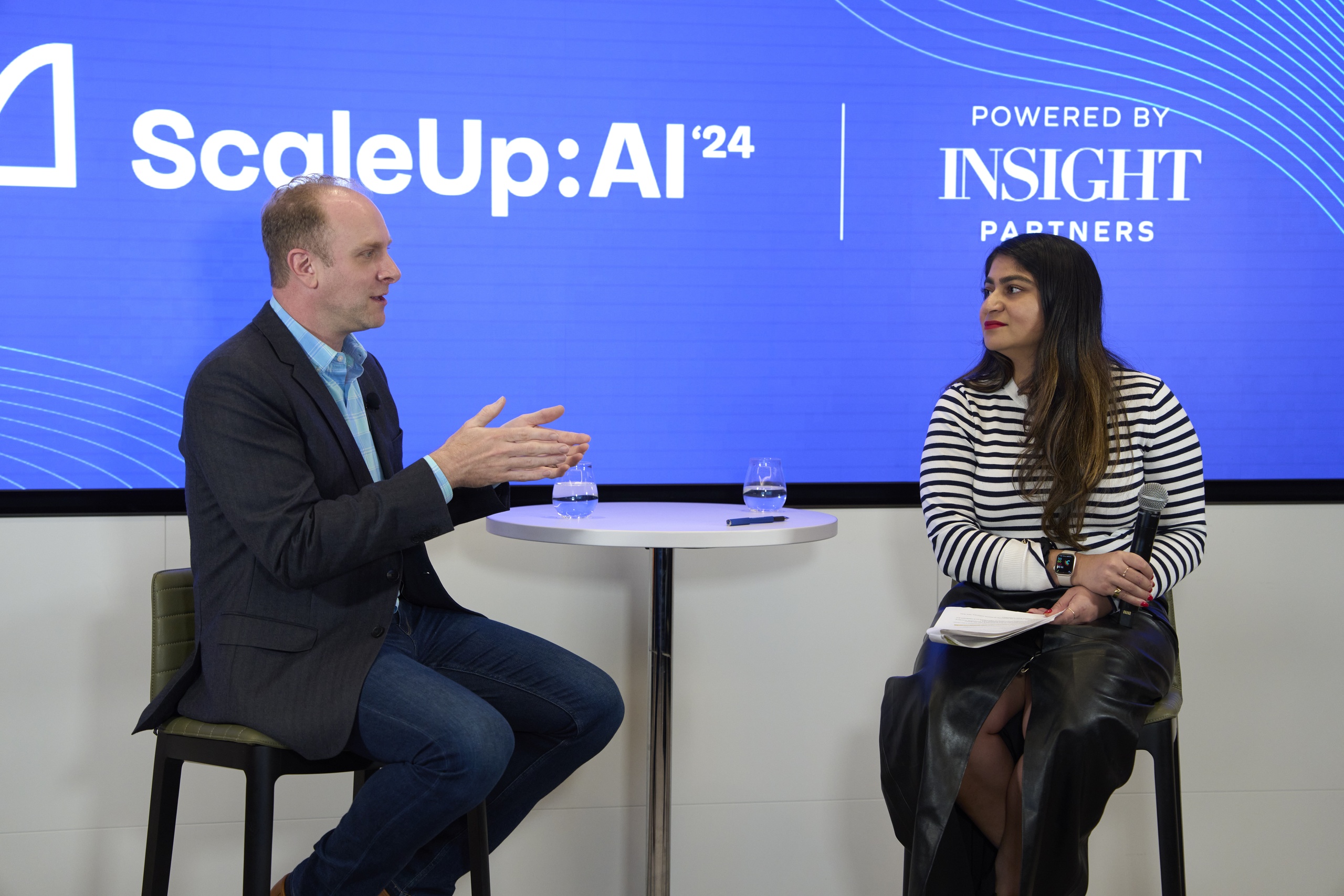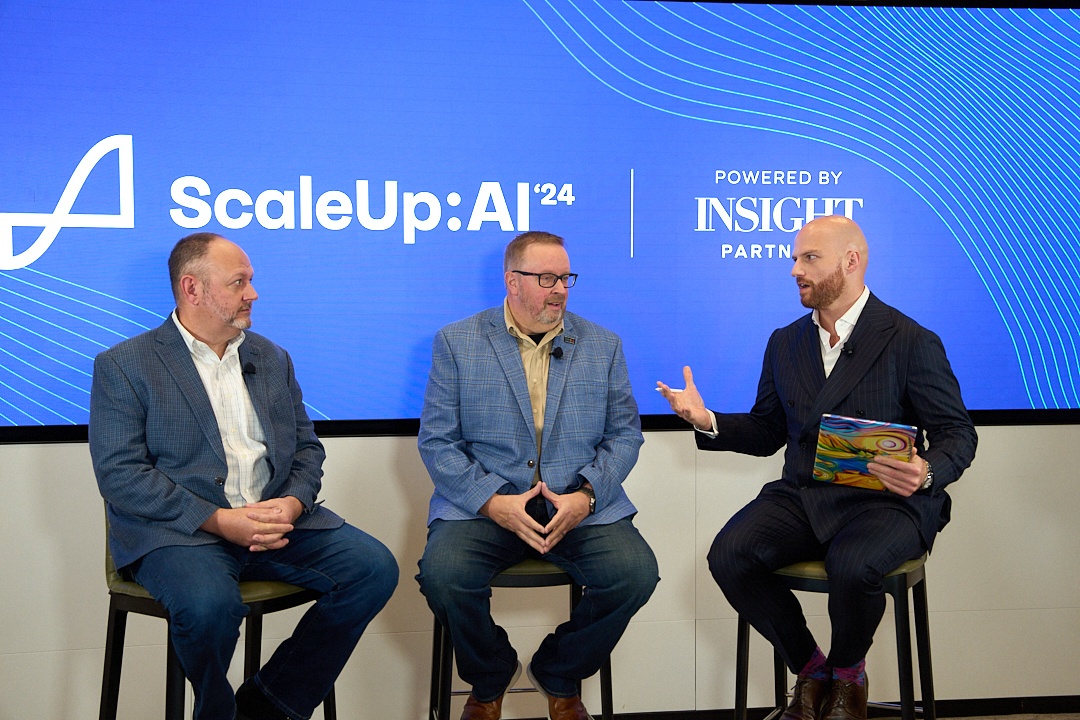AI and software in defense: Shaping tomorrow’s Army

General Jim Rainey, Commander of Army Futures Command, discusses the role of AI and software-driven innovation in military strategy and operations to ensure future war-winning readiness. Learn how AI, software, and other technology innovations transform military capabilities — from logistics to combat.
These insights came from our ScaleUp:AI event in November 2024, an industry-leading global conference that features topics across technologies and industries. Watch the full session below:
Key takeaways
- AI’s immediate and long-term potential: Near-term AI applications focus on optimizing decision-making through better data organization, while future efforts will emphasize human-machine integration to maximize capabilities.
- Preparing a tech-ready workforce: Recognizing the need for soldiers with tech skills, the Army is partnering with institutions like Carnegie Mellon University, developing initiatives like Army Software Factory, and building its workforce to ensure it can confront the challenges ahead.
- Collaboration with the tech industry: AFC embraces partnerships with both traditional defense companies and innovative startups, leveraging America’s tech ecosystem to maintain a strategic edge.
- Driving change in a bureaucracy: General Rainey highlighted the need for faster adoption of technology in the military by aligning accountability, empowering leaders, and fostering a culture of experimentation.
Key speakers
- Speaker: General Jim Rainey, Army Futures Command Commander
- Moderator: Nick Sinai, Insight Partners Managing Director
A unique command for transformational change
Army Futures Command (AFC) stands apart as a service-dedicated initiative focused on transformation. “We’re the only service that dedicated a four-star Major Command to transforming the Army,” General Rainey explained. Situated in Austin, Texas, AFC is strategically positioned to foster innovation in a way that connects directly with both soldiers and the tech industry.
Unlike traditional top-down approaches, AFC tackles challenges starting with individual soldiers and extending to larger systems. “Can you do it in the dirt, in the rain, in the jungle, or in a heavily contested, degraded space?” Gen. Rainey asked, underscoring the command’s commitment to real-world functionality.
Immediate AI applications and long-term transformations
For the Army, AI offers both immediate and aspirational opportunities. Near-term applications focus on organizing and analyzing vast amounts of data. “The amount of information that is knowable to military leaders and unknown…is embarrassing,” Rainey admitted, emphasizing the need for AI-powered tools to enhance decision-making. “Help us bring to bear AI LLMs so that we know what can be known.”
“Help us bring to bear AI LLMs so that we know what can be known.”
Yet, unlocking AI’s full potential requires overcoming significant hurdles. “A lot of our data is locked up in proprietary systems…it’s not organized properly,” he explained. Long-term, the focus shifts to optimizing human-machine integration. The goal isn’t to replace soldiers but to complement their strengths. “I think there are some things that computers will never replace humans at: Free will, curiosity, instincts, and the ethical application of violence,” he noted.
Upskilling soldiers: Building a tech-ready workforce
The Army is thinking about how to preparing its workforce for a tech-driven future, and beginning to identify and train soldiers with untapped coding and data science potential. “We think about 50,000 to 100,000 of our current employees need to add skills,” Gen. Rainey shared. “We don’t have that figured out yet, but to get started, we have two programs tackling that problem from both ends.” Initiatives like partnerships with Carnegie Mellon University are creating top-tier data scientists who can rival industry experts.
Partnering on innovation
AFC is transforming how the military engages with the private sector by fostering partnerships that span the breadth of American innovation. From tech giants and traditional defense contractors to startups and academic institutions, AFC actively seeks collaborations that can bring new ideas and cutting-edge technologies to the table.
“We don’t know what we don’t know,” Gen. Rainey admitted, emphasizing the importance of expanding the Army’s reach beyond conventional defense circles.
Driving change in a bureaucratic system
Modernizing the Army isn’t just about technology but navigating a complex bureaucracy. “We don’t have a tech problem; we have a tech adoption problem in the military,” Rainey pointed out. His solution? Empower leaders to take risks and align accountability with decision-making authority.
“We don’t have a tech problem; we have a tech adoption problem in the military.”
A call to action: Inspire and hire
Gen. Rainey closed with a message to the audience: contribute to national security by inspiring and hiring the next generation of talent. “Inspire young people to serve…hire a veteran or an Army spouse,” he urged. These steps, he emphasized, are vital to preserving the United States’ competitive edge.
Watch more sessions from ScaleUp:AI, and see scaleup.events for updates on ScaleUp:AI 2025.











